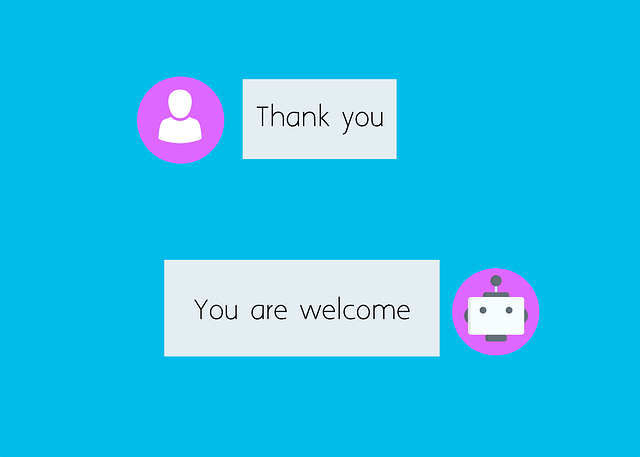The integration of chatbots into e-commerce, driven by modern consumers' demand for immediate and personalized assistance, has significantly enhanced customer engagement. Advanced AI and NLP enable chatbots to provide instant answers and tailored product recommendations, leading to improved customer satisfaction, reduced response times, and higher sales conversions. BigCommerce chatbots, offering 24/7 support, assist with product recommendations, checkout processes, returns, and data collection for targeted marketing. Implementing these tools in your BigCommerce store boosts user engagement and sales, while continuous training and optimization based on analytics and feedback maximize their effectiveness. Measuring key performance indicators (KPIs) like chat volume, response time, conversion rates, and customer satisfaction helps gauge the chatbot's success in enhancing e-commerce experiences.
“In today’s digital landscape, chatbots are revolutionizing the ecommerce space, enhancing customer engagement like never before. This article explores the chatbot in ecommerce, focusing on BigCommerce platforms. We delve into how these AI-driven assistants can transform your online store, from improving customer service to boosting sales. Learn about the key features and benefits of BigCommerce chatbots and discover a step-by-step guide to implementation. Additionally, we’ll uncover best practices for training and optimizing these tools, along with essential metrics to measure their success.”
- The Rise of Chatbots in Ecommerce: Transforming Customer Engagement
- Understanding BigCommerce Chatbots: Features and Benefits
- Implementing Chatbots on Your BigCommerce Store: A Step-by-Step Guide
- Best Practices for Training and Optimizing BigCommerce Chatbots
- Measuring Success: Key Performance Indicators for BigCommerce Chatbot Integration
The Rise of Chatbots in Ecommerce: Transforming Customer Engagement

In recent years, the integration of chatbots in ecommerce has emerged as a powerful tool for transforming customer engagement. With advancements in artificial intelligence and natural language processing, chatbots are now able to facilitate seamless interactions with online shoppers, providing instant answers to queries and personalized product recommendations. This shift towards chatbot-driven commerce is driven by the growing expectations of modern consumers who seek immediate assistance and tailored experiences.
The rise of chatbots in ecommerce offers numerous benefits, including improved customer satisfaction, reduced response times, and increased sales conversions. By handling routine inquiries and offering 24/7 availability, these digital assistants free up human agents to focus on more complex issues. As a result, businesses can enhance their operational efficiency while delivering exceptional service that keeps customers coming back for more.
Understanding BigCommerce Chatbots: Features and Benefits

BigCommerce chatbots are sophisticated tools designed to enhance customer interactions and streamline e-commerce operations. These AI-powered assistants offer a range of features tailored to meet the unique needs of online retailers and their customers. One of the key advantages is their ability to provide instant customer support, answering queries and offering assistance 24/7. With natural language processing capabilities, chatbots can understand and respond to customer inquiries in real time, improving overall satisfaction levels.
Additionally, BigCommerce chatbots can be personalized to reflect a brand’s image and tone of voice. They can assist with product recommendations, guide customers through the checkout process, and even handle simple returns or exchanges. By automating these tasks, businesses can reduce operational costs and free up resources for more complex customer service issues. Chatbots in e-commerce also gather valuable customer data, allowing retailers to gain insights into purchasing behaviors and preferences, which can be used for targeted marketing strategies.
Implementing Chatbots on Your BigCommerce Store: A Step-by-Step Guide

Implementing chatbots on your BigCommerce store is a strategic move to elevate your e-commerce presence and customer experience. In today’s digital era, chatbots have become a game-changer in the world of ecommerce, offering 24/7 support and enhancing user engagement. By integrating a chatbot, you unlock a range of benefits tailored to improve sales and customer satisfaction.
Here’s a step-by-step guide to get you started:
1. Choose a Chatbot Platform: Select a platform that aligns with your store’s needs, considering features like automation, conversational AI, and integration capabilities with BigCommerce.
2. Design Conversational Flows: Map out customer interactions and create engaging dialogue trees. Anticipate common queries and design responses to provide quick solutions while guiding customers towards purchases.
3. Integrate with BigCommerce: Seamlessly connect your chatbot to your store’s backend, allowing it to access product information, inventory updates, and customer data for personalized interactions.
4. Test and Optimize: Conduct thorough testing to ensure smooth operations and accurate responses. Continuously refine the chatbot’s performance based on user feedback and analytics.
Best Practices for Training and Optimizing BigCommerce Chatbots

Training and optimizing your BigCommerce chatbot is key to enhancing customer experience and boosting sales. Firstly, ensure your chatbot has a comprehensive knowledge base covering common queries and product-specific details. Use structured data and well-defined intents to teach the chatbot to understand user inputs accurately. Regularly update this database with new products, promotions, and changes in inventory to keep the chatbot informed.
Additionally, implement active listening techniques by prompting users for feedback after interactions. Analyze these responses to identify areas of improvement, refine the chatbot’s responses, and enhance its ability to resolve queries effectively. Personalization is also crucial; tailor chatbot conversations based on user behavior, purchase history, and preferences. This not only improves engagement but increases the likelihood of conversions, making your ecommerce platform more competitive in the market.
Measuring Success: Key Performance Indicators for BigCommerce Chatbot Integration

Measuring success is vital when integrating a chatbot into an e-commerce platform like BigCommerce. Key Performance Indicators (KPIs) provide insights into how well the chatbot is performing and its impact on user engagement and sales. Some critical KPIs to track include chat volume, which measures the number of interactions with the chatbot, and average response time, gauging the efficiency of customer support.
Conversion rate is another essential metric, indicating the percentage of users who take a desired action after interacting with the chatbot, such as making a purchase or signing up for newsletters. Additionally, customer satisfaction scores derived from post-interaction surveys help assess user experience and the chatbot’s effectiveness in resolving queries and enhancing overall shopping journeys on BigCommerce stores.
BigCommerce chatbots are revolutionizing the way we interact with online stores, offering a dynamic and personalized shopping experience. By implementing these conversational AI tools, businesses can enhance customer engagement, increase sales, and provide 24/7 support. The rise of chatbots in ecommerce is not just a trend but a strategic move to stay competitive in today’s digital landscape. With the right features, training, and optimization, BigCommerce chatbots can become powerful assets, driving success for online retailers by delivering an exceptional customer journey.
